[ESP/ENG] Influencia religiosa, política y económica del oro en el Egipto de los faraones. / Religious, political and economic influence of gold in the Egypt of the pharaohs.
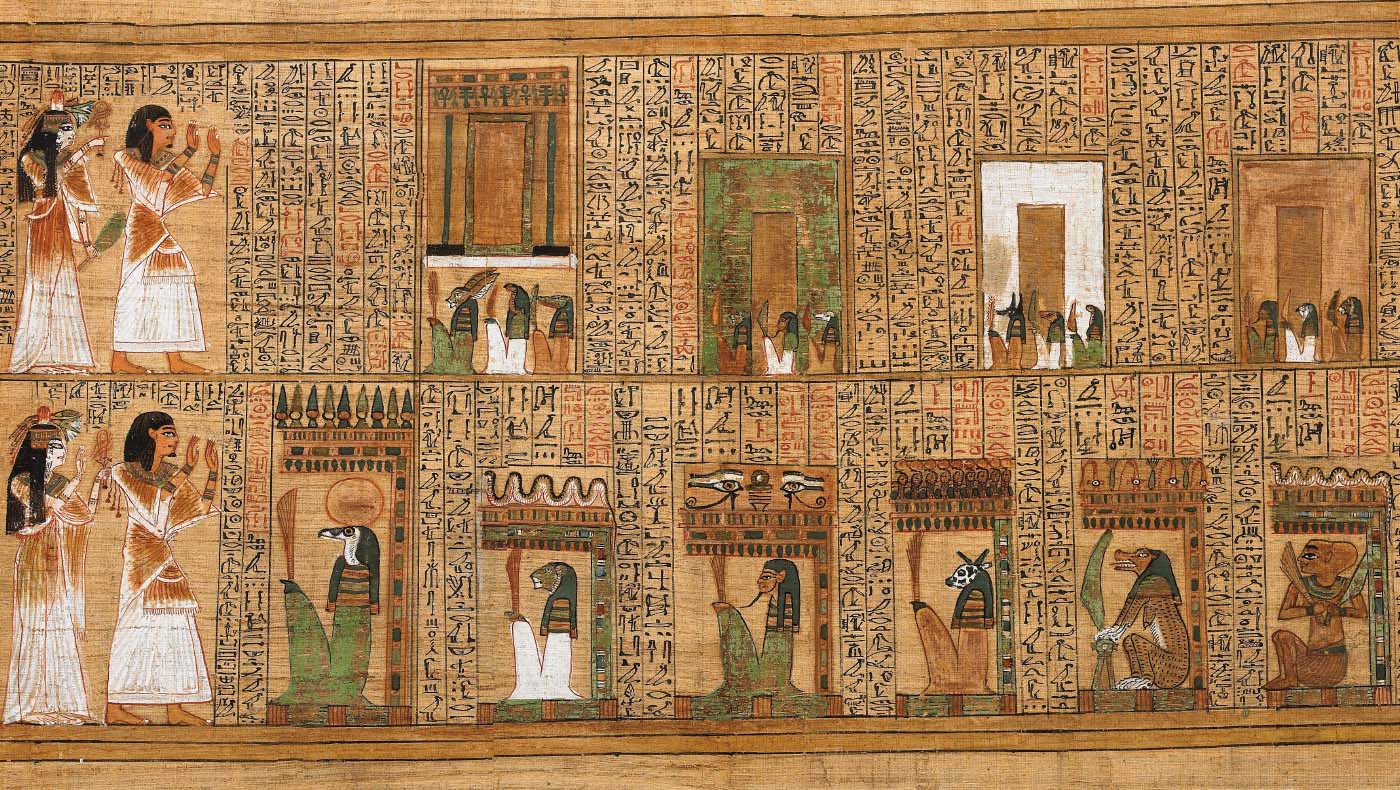
El oro a través de toda la historia de la humanidad ha asumido siempre un papel preponderante, en el bien y en el mal.
Símbolo frecuente de poder, riqueza, ostentación y, por que no, también corrupción a través de milenios de historia ha sido protagonista indiscutido en las luchas de poder ya sea a nivel social, religioso, político o económico.
No hace mucho tiempo terminé de leer la saga completa de Ramsés II (pasado a la historia simplemente como Ramses a pesar de que esta dinastía tuvo varios representantes con ese nombre), cinco libros escritos por el francés Christian Jacq, egiptólogo y apasionado de geroglíficos.
Me llamó poderosamente la atención a lo largo de toda la trama, la atención que en el autor despertaba el uso de los metales (ferrosos y preciosos) en esa época y la acabada descricpción que el mismo daba sobre su uso.
Esto me llevó aindagar un poco más en este aspecto particular de la historia antigua y en especial a la llamada "era faraónica" vigente en el Antiguo Egupto (Alto y Bajo) durante más de cuatro mil años.
Una era llena de datos históricos pero también de curiosidades y excentricidades mezcladas muchas veces con estrategias políticas, militares, económicas, amores y traiciones.
Y lo sorprendente es que en la mayor parte de estos aspectos la presencia del oro era inevitable.
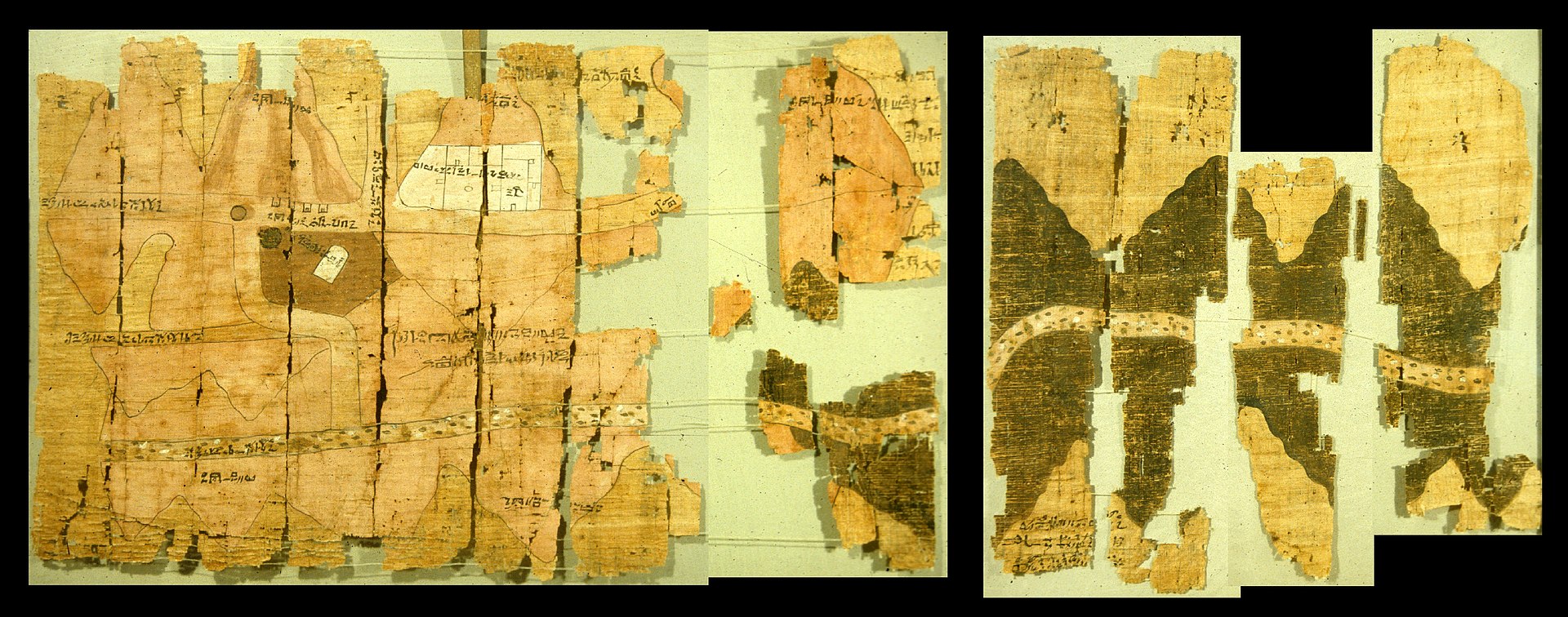
Gold throughout the history of humanity has always assumed a preponderant role, in good and in evil.
Frequent symbol of power, wealth, ostentation and, why not, also corruption throughout millennia of history has been the undisputed protagonist in power struggles, whether at a social, religious, political or economic level.
Not long ago I finished reading the complete saga of Ramses II (gone down in history simply as Ramses despite the fact that this dynasty had several representatives with that name), five books written by the French Christian Jacq, Egyptologist and passionate about hieroglyphics.
I was powerfully struck by the entire plot, the attention that the author aroused the use of metals (ferrous and precious) at that time and the finished description that he gave about their use.
This led me to investigate a little more in this particular aspect of ancient history and especially the so-called "pharaonic era" in force in the Ancient Egypt (Upper and Lower) for more than four thousand years.
An era full of historical data but also of curiosities and eccentricities often mixed with political, military, economic strategies, love affairs and betrayals.
And the surprising thing is that in most of these respects the presence of gold was inevitable.
El oro como instrumento religioso. / Gold as a religious instrument.

Las ofrendas de oro (especialmente durante el extenso reinado de Ramsés) a los dioses que estaban encarnados en cada templo no solo eran frecuentes sino también abundantes, ya sea aquellas que se realizaban con frecuencia anual que aquellas otras que se efectuaban para gozar de la clemencia de los dioses ante determinadas calamadidades.
Ramses era extremadamente devoto a los dioses y a ellos se dirigía una vez al año cuando debía efectuar su "recarga espiritual". Aquella que le daba fuerza y poder para gobernar.
Antes de efectuar este retiro generalmente efectuaba una expedición al frente de su ejército en Nubia donde estaban los mayores yacimientos de los cuáles extraía el preciado metal que luego ofrecía a los dioses.
Nubia era una región situada al sur de Egipto y al norte de Sudán que desde tiempos inmemoriales reclamaba su independencia si bien estaba formada en su mayoría por tribus y clanes salvajes sin un domicio unificado.
Después de la colonización inglesa (fin del siglo XVIII) Nubia fue separada en dos partes y absorbida entre Egipto (la parte norte) y Sudán (la parte sur).
Con los carros de guerra y bestias de cargas repletos de sacos de oro Ramsés volvía a Egipto, a Tebas y a Menfis, donde tenía sede su gobierno y donde estaban radicados la mayoría de los templos.
Precisamente en Nubia, Ramsés hace erigir después de la batalla de Kadesh y su supuesta victoria contra el ejército hitita (en realidad los historiadores concuerdan en afirmar que cada uno de los ejército logró mantener su posición sin registrarse vencedores no vencidos) uno de los templos más grandes dedicados a su propio culto y a los dioses por el faraón venerados: el templo de Abu Simbel.
Las numerosas ofrendas en oro fueron motivo para que con el pasar de los años proliferaron los llamados "profanadores o saqueadores de tumbas" conscientes de los enormes tesoros que albergaban.

The offerings of gold (especially during the extensive reign of Ramses) to the gods who were incarnated in each temple were not only frequent but also abundant, both those that were made annually and those that were made to enjoy clemency. of the gods before certain calamities.
Ramses was extremely devoted to the gods and would turn to them once a year when he had to perform his "spiritual recharge." The one that gave him strength and power to rule.
Before making this retreat, he generally carried out an expedition at the head of his army in Nubia where the largest deposits were from which he extracted the precious metal that he later offered to the gods.
Nubia was a region located to the south of Egypt and north of Sudan that from time immemorial claimed its independence although it was made up mostly of wild tribes and clans without a unified domination.
After the English colonization (end of the 18th century) Nubia was separated into two parts and absorbed between Egypt (the northern part) and Sudan (the southern part).
With chariots and beasts of burden full of sacks of gold, Ramses returned to Egypt, Thebes and Memphis, where his government was based and where most of the temples were located.
Precisely in Nubia, Ramses had one of the most important temples erected after the battle of Kadesh and his supposed victory against the Hittite army (in fact, historians agree that each one of the army managed to maintain its position without registering undefeated victors). large dedicated to his own worship and to the gods venerated by the pharaoh: the temple of Abu Simbel.
The numerous offerings in gold were the reason for the proliferation of the so-called "profaners or grave robbers" aware of the enormous treasures they housed over the years.
El oro como instrumento político. / Gold as a political instrument.
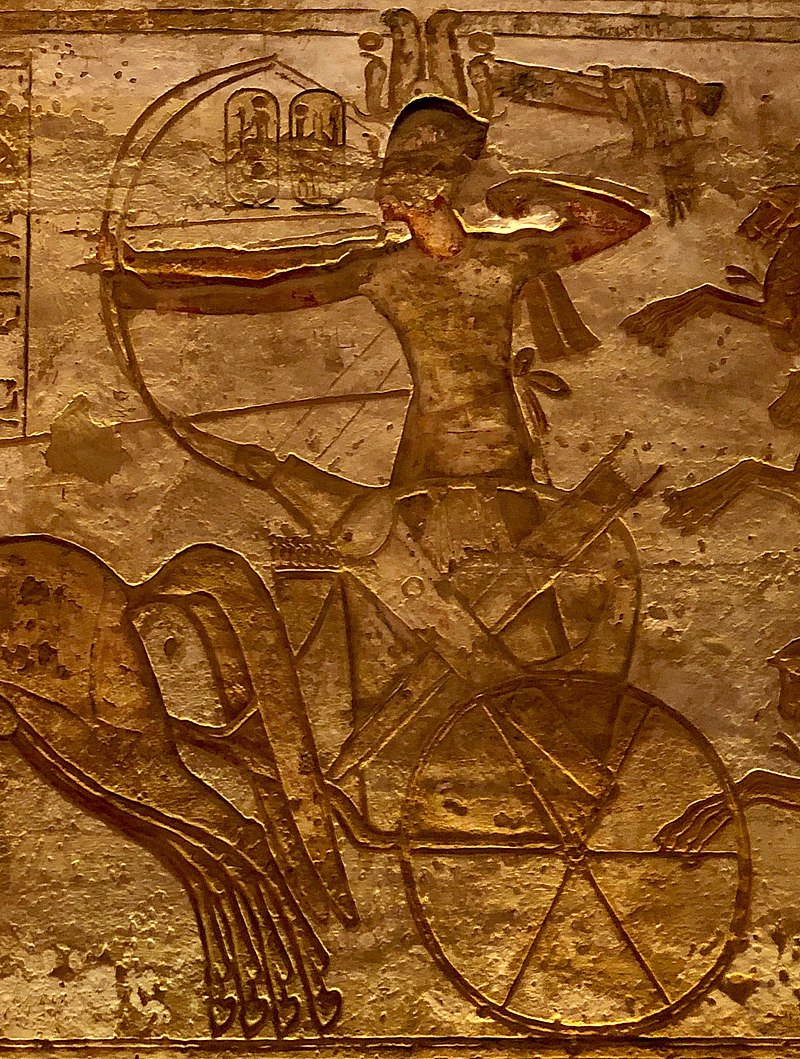
El reinado de Ramses que duró más de 60 años (entre 1279 a. C. y 1213 a. C) fue noi solo el más longevo de la era faraónica sino también uno de los máa pacíficos.
Salvo escaramuzas ocasionales con las tribus beduinas que ocupaban Siria y parte del desierto y la constante amenza hitita que se proyectaba desde la Anatolia (actual Turquía) con el permanente interés de anexarse el Egipto considerada la principal y más evolucionada potencia de la era antigua, Ramsés entabló muy pocas batallas.
La principal como es notorio, fue la de Kadesh cuando ambos ejércitos (los hititas al mando de Muwatalli II que querían invadir por sorpresa el Alto Egipto (la zona del Delta) y Ramsés que salió a interceptarlos, se encontraron en cercanías de la ciudad-fortaleza de Kadesh (o Qadesh).
La zona, que era un protectorado de Egipto había sido ocupada por el ejército hitita para hacer un puesto de vanguardia y reaprovisionamiento de sus fuerzas en su paso hacia Egipto.
Después de un sitio de varios meses se llegó a un acuerdo entre ambas partes, refrendando el primer tratado de paz conocido como tal en la historia y supuestamente después de haber entregado Ramsés una gran cantidad de oro a sus enemigos para asegurarse una paz futura.
Esta estrategia Ramsés la llevó a cabo frecuentemente con todos sus enemigos; sirios, beduinos y tribus autónomas, los llamados "corredores de la arena".
De esta manera el oro extraído abundantemente de las mineras nubianas pasó a convertirse en un instrumento de paz.
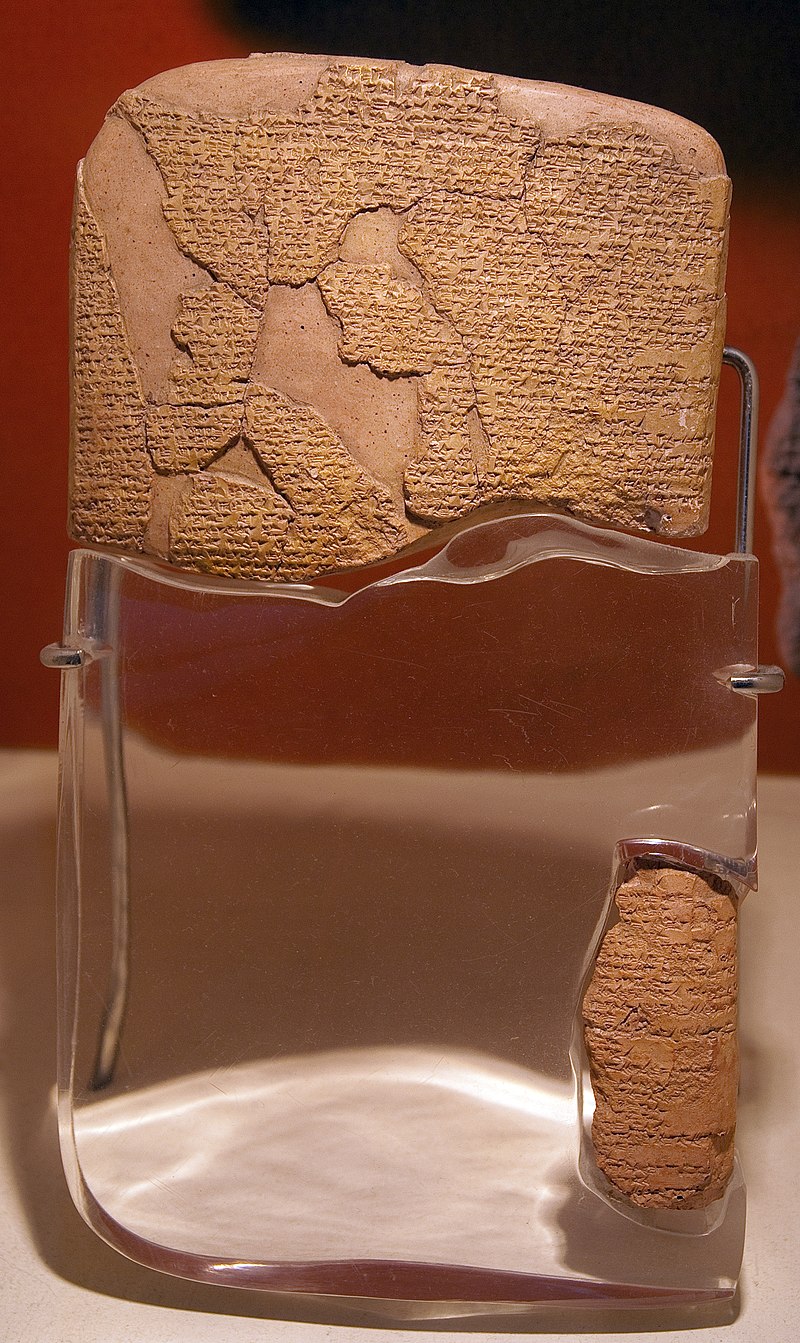
The reign of Ramses that lasted more than 60 years (between 1279 BC and 1213 BC) was not only the longest of the Pharaonic era but also one of the most peaceful.
Except for occasional skirmishes with the Bedouin tribes that occupied Syria and part of the desert and the constant Hittite threat that was projected from Anatolia (modern Turkey) with the permanent interest of annexing Egypt considered the main and most evolved power of the ancient era, Ramses fought very few battles.
The main one, as is well known, was that of Kadesh when both armies (the Hittites under Muwatalli II who wanted to invade Upper Egypt (the Delta area) by surprise and Ramses who went out to intercept them, found themselves in the vicinity of the city- fortress of Kadesh (or Qadesh).
The area, which was a protectorate of Egypt, had been occupied by the Hittite army to make a vanguard post and resupply its forces on its way to Egypt.
After a siege of several months, an agreement was reached between both parties, endorsing the first peace treaty known as such in history and supposedly after Ramses had delivered a large quantity of gold to his enemies to ensure a future peace.
This strategy Ramses carried out frequently with all his enemies; Syrians, Bedouin and autonomous tribes, the so-called "sand corridors".
In this way, the abundantly extracted gold from the Nubian mining companies became an instrument of peace.
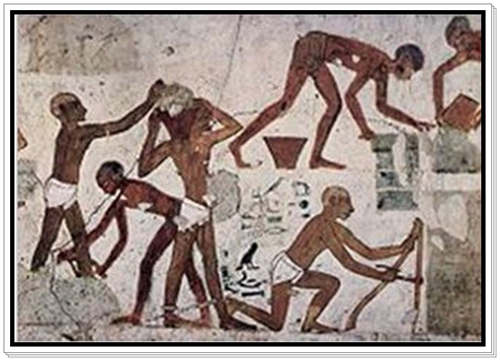
Referencias y Bibliografía. / References and Bibliography
- Christian Jacq: Ramsés III. La batalla de Kadesh, 1996
- La Batalla de Kadesh.
- El Oro de los Faraones.
- Historia y Arqueología.

Gracias por apoyar mis contenidos @fridakahlo. Mi infinito agradecimiento al proyecto @Cervantes.